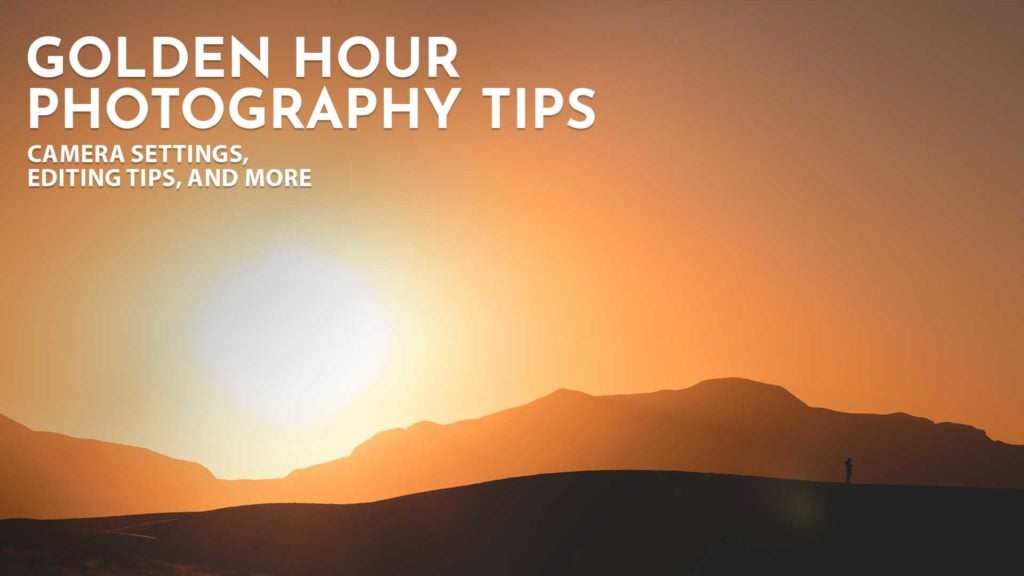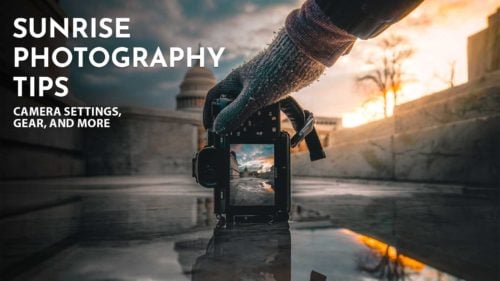Golden Hour is a magical time when the light offers soft, warm hues, and is the perfect opportunity for photographers to capture stunning images. With the right compositions and a few my helpful tips, anyone can capture this beautiful time of day.
Jump to golden hour camera settings
Golden hour photography is popular with for all types of photography. No matter if it’s travel photography, landscape, cityscape or portrait photography golden hour can enhance just about any photo.
In this post, we’ll go over essential golden hour photography tips to help you create breathtaking photos that stand out from the rest. From choosing the optimal location to understanding camera settings, these tips will guide you in harnessing the power of golden hour no matter if you’re a beginner or pro.
Table of contents
Understanding Golden Hour
You’ve probably heard the term “Golden Hour” mentioned a lot; especially if you’re a photographer. It’s a magical time of day when the light is warm, soft, and flattering. But what exactly is golden hour, and what makes it so special? Let’s dive into the concept of golden hour and what it means for your photography.
What is Golden Hour?
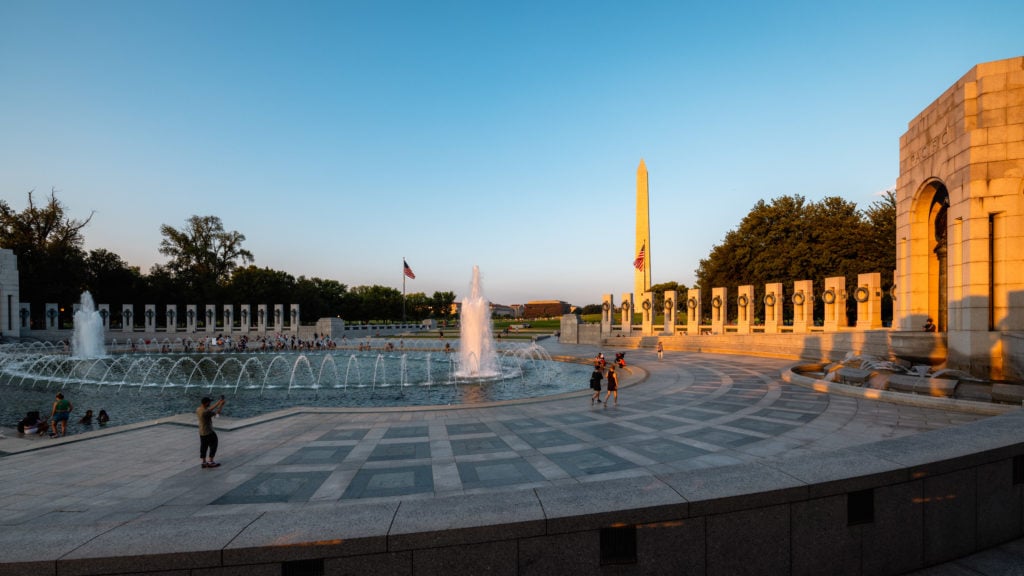
Golden Hour is a period of time shortly after sunrise or before sunset when the sun is low on the horizon, creating a soft, warm, and diffused light. During this time, the quality of the light is softer and more colorful, casting long shadows and creating a warm glow that can transform any scene. The exact duration of golden hour varies depending on your location, time of year, and weather conditions, but Golden Hour typically lasts around an hour.
Why is Golden Hour Important for Photography?
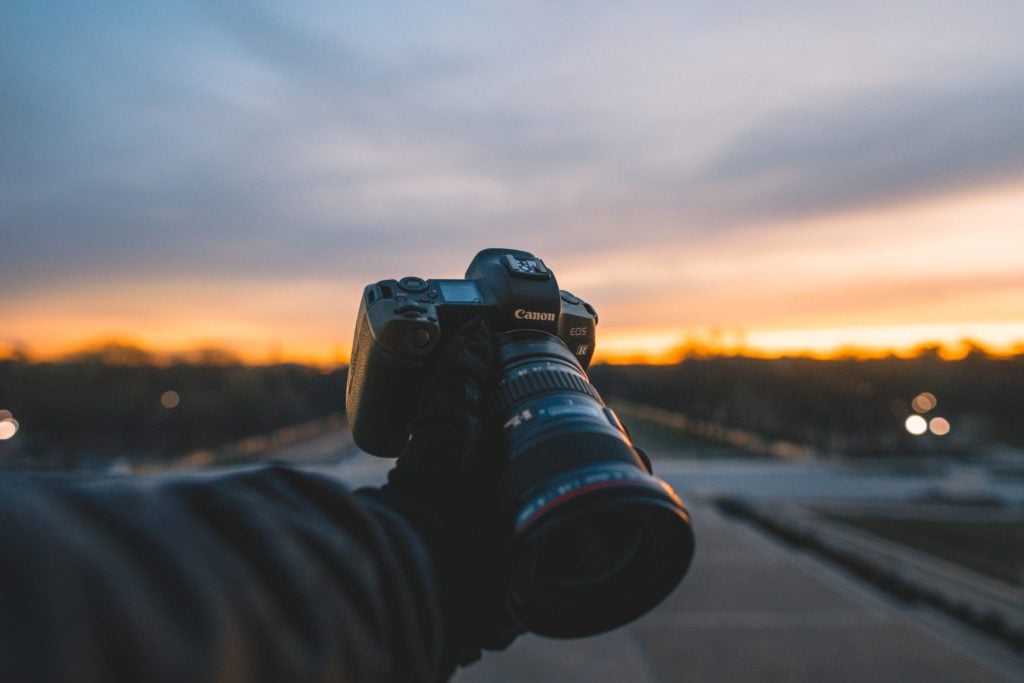
Golden Hour is a photographer’s dream come true. It offers a range of benefits that can help you capture stunning photos. Here are some of the Golden Hour benefits to photography:
- Soft Light: During Golden Hour the sun’s rays are at an angle creating a diffusion effect. This makes the light perfect for portraits offering a softer effect.
- Directional: With the sun’s low position in the sky it creates very directional light. This is great for capturing silhouettes, dramatic shadows, sunbursts, rim lighting, and other unique lighting conditions.
- Warm Colors: Golden Hour light is warming offering a orangish glow to your photos. The warm and diffused light can create a romantic and dreamy atmosphere, perfect for capturing stunning portraits, landscapes, and cityscapes.
- Reduced Contrast: Since the sun is low on the horizon during golden hour, there are fewer shadows and less contrast in your photos depending on the angle of your shot.
- Colorful Skies: During golden hour, the sky takes on a beautiful, warm hue that can be perfect for landscape photography. This can create a stunning backdrop for your photos and make them stand out from the rest.
- Less Crowded: Because golden hour occurs either early in the morning or late in the evening, there are typically fewer people around. This means you can take your time and focus on capturing the perfect shot without worrying about crowds or distractions. Personally I love an early morning sunrise to start the day.
Since Golden Hour only lasts an hour (hence its name), you need to be prepared to make the most of it. Plan your shots in advance, arrive early, and be ready to shoot as soon as the light starts to change. You’ll also need to be aware that the light can change rapidly during golden hour, so be prepared to adjust your camera settings and composition accordingly.
Why Golden Hour is the Best Time to Shoot
You may be aware of how harsh the lighting can be if you’ve ever shot photos in the middle of the day. It can be challenging to get an a great shot because of the harsh shadows and overexposed highlights that are caused by the direct sunshine.
During golden hour, however, the sun is low on the horizon, casting a warm, soft light that is perfect for photography. Your images may appear more dreamlike thanks to the light’s stunning warm glow and diffusion, this is why golden hour is often referred to as “magic hour”.
Now that you know what golden hour is and why it’s important for photography, let’s jump into the best camera settings for golden hour.
Camera Settings for Golden Hour Photography
To capture the perfect shot during golden hour, you need to adjust your camera settings. In this section, we’ll discuss the three main camera settings that you need to consider: Aperture, Shutter Speed, and ISO.
Quick Golden Hour Camera Settings Breakdown:
- Shooting Mode: Aperture priority (Av)
- ISO: Low, ISO 100 – ISO 200
- Aperture: Low, ideally f/2.8 – f/4.0
- Shutter Speed: Since the camera is on Aperture priority, your camera will automatically adjust.
- Image Format: RAW
Aperture
Aperture, which is measured in f-stops, controls the amount of light that enters the camera lens. During golden hour, the light is soft and warm, so you want to use a wide aperture (small f-stop number) to capture the rich colors and depth of the scene. Of course this will vary depending on what effect you’re going for. An aperture of f/4 or lower is ideal for golden hour photography because it allows more light to enter the lens. If you are capturing a landscape and want more of the scene in focus you can use an aperture of around f/8.
Shutter Speed
Shutter speed is the amount of time that your camera’s sensor is exposed to light. During golden hour, the light is fading quickly, so you need to use a faster shutter speed to prevent blur in your photos. A shutter speed of 1/125 or higher is recommended for golden hour photography, but you can experiment with different speeds to achieve the desired effect.
ISO
ISO measures the sensitivity of your camera’s sensor to light. During golden hour, you want to use a low ISO setting to reduce the amount of noise in your photos. A setting of ISO 100 or 200 is ideal for golden hour photography, but you may need to increase the ISO if the light is too dim. As the evening gets darker you’ll need to crank your ISO up if you are shooting handheld.
Tips for Golden Hour Photography
Let’s cover some tips for taking the best golden hour photos.
Finding the Right Location
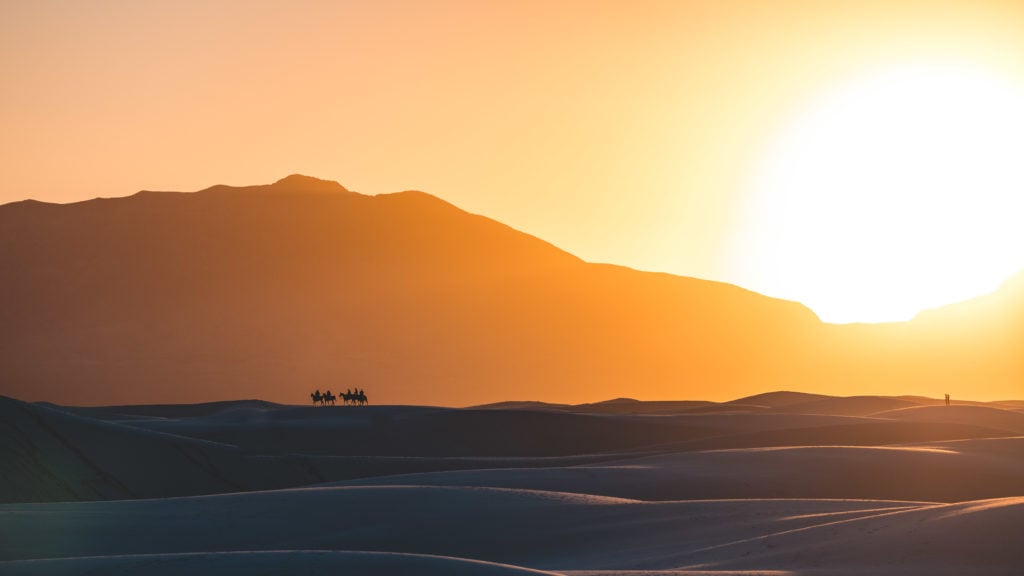
The first step to taking great golden hour photos is finding the right location. Look for areas with interesting landscapes, such as mountains or beaches. You can also try shooting in urban areas with tall buildings and interesting architecture. This is where knowing your city comes in handy, I have written plenty of travel guides for locations if you need inspiration. Keep in mind that the sun will be low in the sky, so you’ll want to find a location with a clear view of the horizon.
Apps like the The Photographer’s Ephemeris can help you plan when golden hour is and where the light will be shining.
Utilizing Natural Light
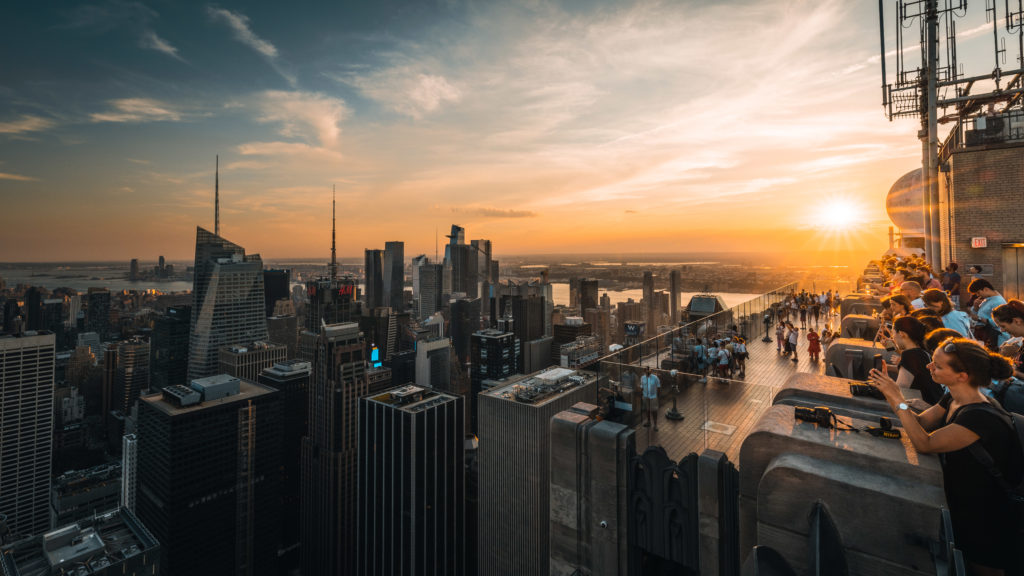
It’s hard to hate the sun’s beautiful warm and soft glow during golden hour. One popular composition during golden hour for portraits is to position subject so that the sun is behind them. This creates a beautiful backlight that will make your subject appear to glow. You can also experiment with shooting directly into the sun to create a dramatic silhouette. If you are taking backlit portraits and want better results you could try using a reflector.
Creating Depth

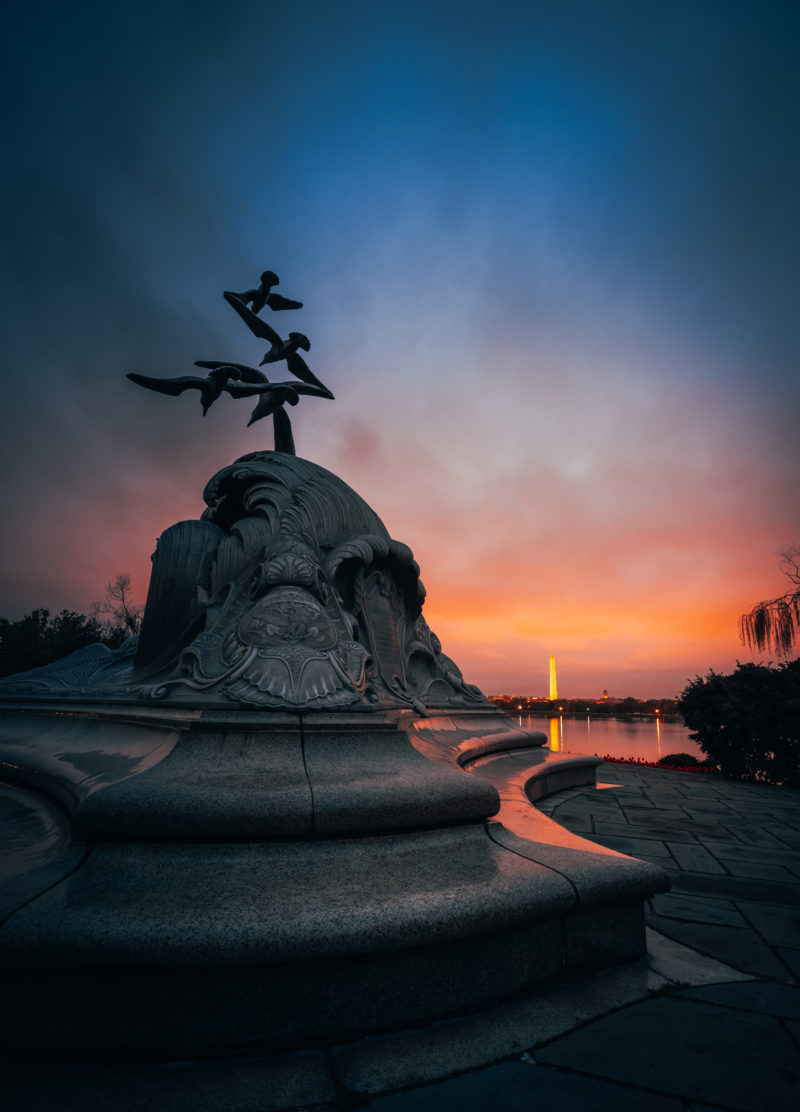
Adding depth to your images is one of the secrets of outstanding photography. The extended shadows during golden hour can help you in accomplishing this. Look for elements in your surroundings that might give your images depth, such trees or structures. By placing your subject in the foreground and the surrounding scenery in the background, you may also use golden light to provide the effect of depth. Additionally, lowering your aperture can help increase depth of field effects.
Get Out Early to Avoid the Crowds
Want to stay away from busy areas? Consider leaving early! This may sound like a simple tip but you’ll be surprised how easy it is to forget. You can avoid the crowds and enjoy your trip in quiet if you leave earlier than normal. You’ll notice that there are substantially fewer people about in the morning, whether you’re going to a major tourist attraction or just wondering a city. Set your alarm up a little earlier and leave before the crowds begin to swell!
Capture the Sun with a Sunburst Effect
Capturing the sun with a sunburst/starburst effect is a simple technique that adds a stunning, eye-catching touch to your photographs. Commonly called lens flares this is the star like effect that your camera’s aperture blades create when shooting a direct light source. To achieve this effect, simply position your camera so the sun is visible anywhere in your frame. You’ll want to use a higher f-stop like f/16 which will create the “sunburst” effect.
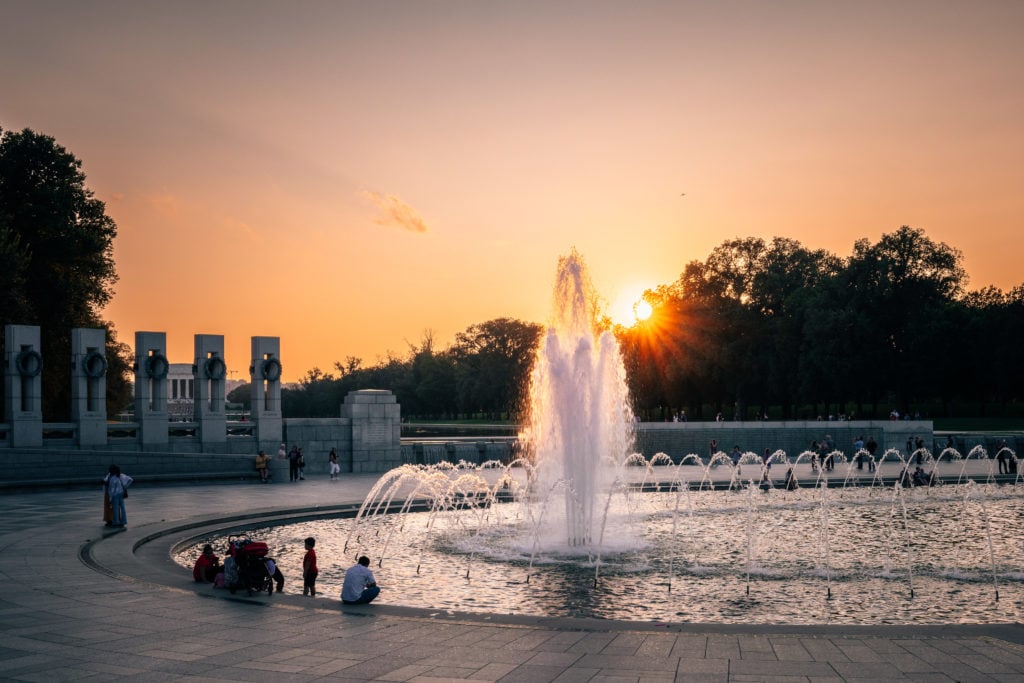
The result is a beautiful and dramatic effect that can add depth and dimension to your photos. With a little bit of practice and experimentation, you can capture the perfect sunburst and take your photography skills to the next level.
Just be careful not to leave your camera facing the sun without a lens cap on since it can damage a camera if it sits too long with direct sun exposure.
Taking photos during golden hour can be a challenge, but it’s worth it for the stunning results. By finding the right location, utilizing natural light, and creating depth in your images, you’ll be able to capture photos that will take your breath away.
Post-Processing Golden Hour Photos
Post-processing is needed to make your golden hour photos look even better. Let’s go over some of the best editing tips for golden hour photos.
Enhance Colors
One of the best ways to enhance the colors of a golden hour photo is to adjust the saturation and vibrancy. This can be done using tools like Adobe Lightroom or Photoshop. Start by increasing the vibrance to bring out the colors of the photo. Using the vibrance setting in Lightroom will give your photo a nature look vs when increasing saturation. Be careful not to overdo it, you can quickly make a photo look unnatural. Another option is to adjust the white balance to make the colors appear warmer or cooler. This is why shooting in RAW is essential when taking pictures during golden hour. RAW photos can have their color temperature modified without damaging the original image.
Adjust Exposure
Golden hour can be tricky to expose correctly, especially if you are shooting directly into the sun. Sometimes, the photo may appear too bright or too dark. Adjusting the exposure can help to correct this. In Lightroom or Photoshop, you can adjust the exposure using the exposure slider tool. If the photo is too bright, decrease the exposure. If the photo is too dark, increase the exposure. Be careful not to go too far, as this can lead to loss of detail.
How much detail you can recover from the highlights/shadows will depend on your camera’s dynamic range. This is why it’s best to capture the image you want in camera.
Add Contrast
Golden hour photos can sometimes appear flat and lacking in contrast. Adding contrast can help to bring out the details and make the photo look more dynamic. In Lightroom or Photoshop, you can use the contrast slider tool to adjust the contrast.
Post-processing golden hour photos is essential to make them look their best. By following these tips for enhancing colors, adjusting exposure, and adding contrast, you can take your golden hour photos to the next level. Experiment with different settings and find what works best for your photos. Don’t be afraid to get creative and have fun with it!
Golden Hour Photography Frequently Asked Questions
What is golden hour photography?
Golden Hour Photography refers to the period of time shortly after sunrise or before sunset when the lighting conditions are ideal for capturing stunning, warm, and soft golden tones in your photographs. Golden Hour is by far one of the most popular times for photographers to go out and take pictures.
Why is the golden hour considered the best time for photography?
As you’ve seen in this post during the Golden Hour, the sun is low in the sky, which creates a soft and diffused light that enhances the colors and textures in your photos. The warm golden tones and longer shadows also add depth and dimension to your images, making them more visually appealing.
How long does the golden hour last?
The duration of the Golden Hour varies depending on your location and the time of year. On average, it can last anywhere from 20 minutes to an hour depending on when golden hour starts, with the most dramatic lighting typically occurring in the 15-30 minutes before and after sunrise or sunset.
Can you still take photos during other times of the day?
Of course! While the Golden Hour offers the most favorable lighting conditions, photography can be done at any time of the day. However, shooting during midday when the sun is directly overhead can result in harsh shadows and less flattering light. It’s important to adapt your techniques and settings accordingly to make the most of the available light.
What equipment do I need for golden hour photography?
The equipment you need for Golden Hour Photography is similar to what you would use for any other type of photography. The basics like a camera, a tripod for stability, a variety of lenses, and possibly filters to enhance the colors and control the light are recommended. However, it’s important to note that skill and creativity are more important than gear when it comes to capturing beautiful Golden Hour shots.
How can I make the most of the Golden Hour lighting?
To make the most of the Golden Hour lighting, it’s important to plan ahead and be prepared. Scout your location in advance, take note of the direction of the light, and consider how it will interact with your subject. Experiment with different compositions and angles to capture the best possible shots. Additionally, shooting in RAW format allows for greater flexibility in post-processing, enabling you to bring out the full potential of the Golden Hour lighting in your photos.
Which subjects are best suited for golden hour photography?
Golden Hour lighting can enhance a wide range of subjects, such as landscapes, portraits, nature, architecture, and even street photography. The warm and soft light can add a magical and dreamy atmosphere to your images, making them more captivating and inviting.
Can I use golden hour photography techniques indoors?
While Golden Hour Photography is typically associated with outdoor natural light, you can also apply similar techniques indoors. Positioning your subject near a window where soft, diffused light enters can create a similar effect. Experiment with different angles and settings to achieve the desired mood and ambiance in your indoor shots.
What if I can’t shoot during the Golden Hour?
If you’re unable to shoot during the Golden Hour, there are still ways to achieve beautiful lighting in your photos. Consider shooting during the “Blue Hour,” which occurs shortly before sunrise or after sunset when the sky has a deep blue hue. Additionally, you can experiment with artificial lighting techniques, such as using off-camera flash or reflectors, to create interesting and unique lighting effects.
Are there any safety considerations for shooting during the Golden Hour?
It’s important to prioritize your safety when shooting during the Golden Hour, especially if you’re in a remote or unfamiliar location. Be aware of your surroundings, watch out for uneven terrain or potential hazards, and bring necessary supplies like water, sunscreen, and insect repellent. Additionally, if you’re shooting near roads or busy areas, make sure to stay aware of traffic and take precautions to ensure your safety.
Conclusion
Golden hour presents a magical opportunity for photographers to capture stunning images. By mastering the art of golden hour photography, you can create breathtaking photos that showcase the natural beauty of a scene.
When shooting during these enchanting hours, remember to adjust camera settings accordingly, make use of the warm colors, and experiment with different angles to find the perfect shot.
Additionally, don’t be afraid to use photo editing tools to enhance the final results. With practice and persistence, anyone can become a skilled golden hour photographer and produce stunning images that captivate viewers.
After golden hour you’ll be able to enjoy sunset and blue hour to experiment with even more creativity. Happy shooting!

